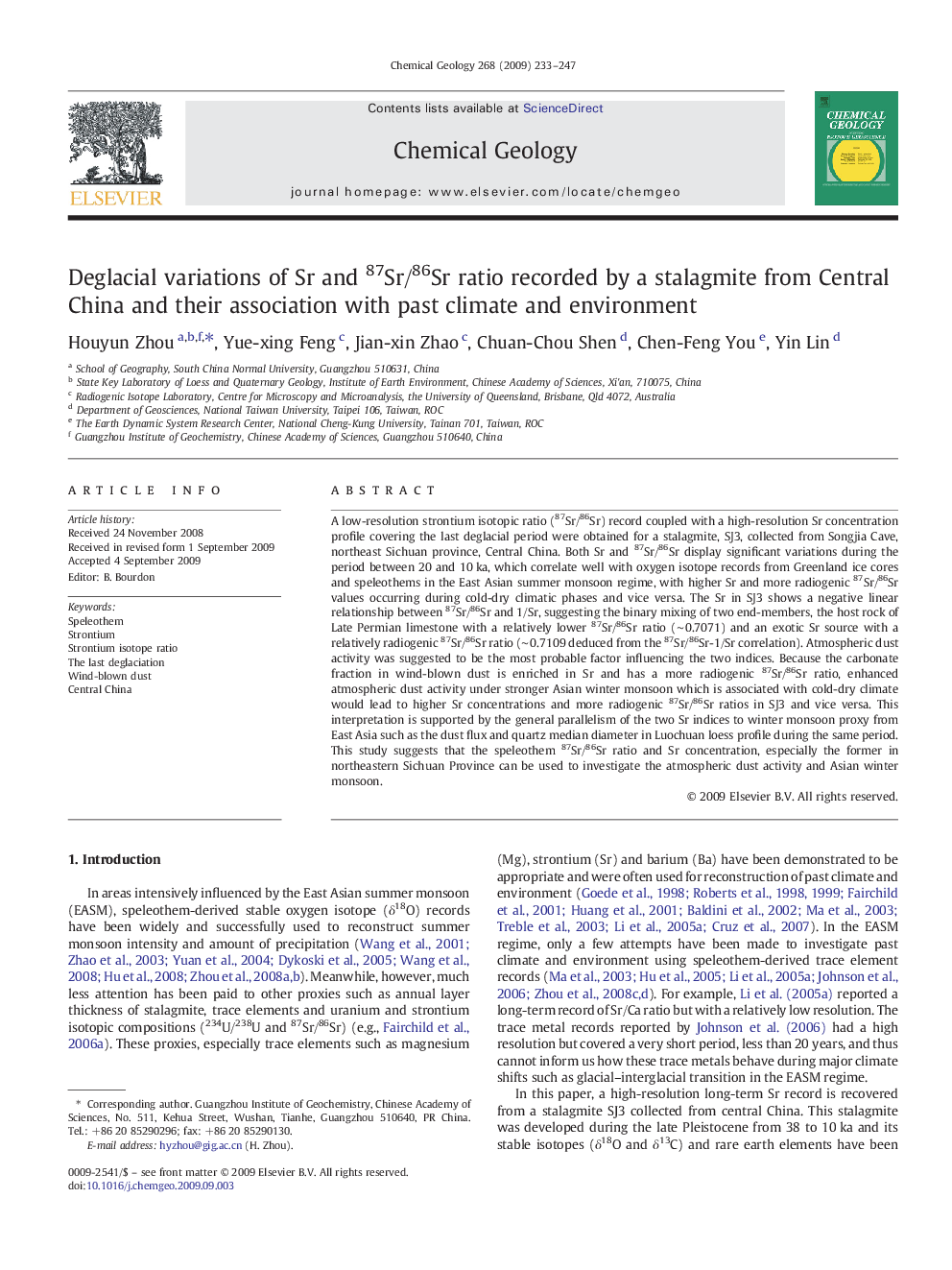| Article ID | Journal | Published Year | Pages | File Type |
|---|---|---|---|---|
| 4700102 | Chemical Geology | 2009 | 15 Pages |
A low-resolution strontium isotopic ratio (87Sr/86Sr) record coupled with a high-resolution Sr concentration profile covering the last deglacial period were obtained for a stalagmite, SJ3, collected from Songjia Cave, northeast Sichuan province, Central China. Both Sr and 87Sr/86Sr display significant variations during the period between 20 and 10 ka, which correlate well with oxygen isotope records from Greenland ice cores and speleothems in the East Asian summer monsoon regime, with higher Sr and more radiogenic 87Sr/86Sr values occurring during cold-dry climatic phases and vice versa. The Sr in SJ3 shows a negative linear relationship between 87Sr/86Sr and 1/Sr, suggesting the binary mixing of two end-members, the host rock of Late Permian limestone with a relatively lower 87Sr/86Sr ratio (∼ 0.7071) and an exotic Sr source with a relatively radiogenic 87Sr/86Sr ratio (∼ 0.7109 deduced from the 87Sr/86Sr-1/Sr correlation). Atmospheric dust activity was suggested to be the most probable factor influencing the two indices. Because the carbonate fraction in wind-blown dust is enriched in Sr and has a more radiogenic 87Sr/86Sr ratio, enhanced atmospheric dust activity under stronger Asian winter monsoon which is associated with cold-dry climate would lead to higher Sr concentrations and more radiogenic 87Sr/86Sr ratios in SJ3 and vice versa. This interpretation is supported by the general parallelism of the two Sr indices to winter monsoon proxy from East Asia such as the dust flux and quartz median diameter in Luochuan loess profile during the same period. This study suggests that the speleothem 87Sr/86Sr ratio and Sr concentration, especially the former in northeastern Sichuan Province can be used to investigate the atmospheric dust activity and Asian winter monsoon.
